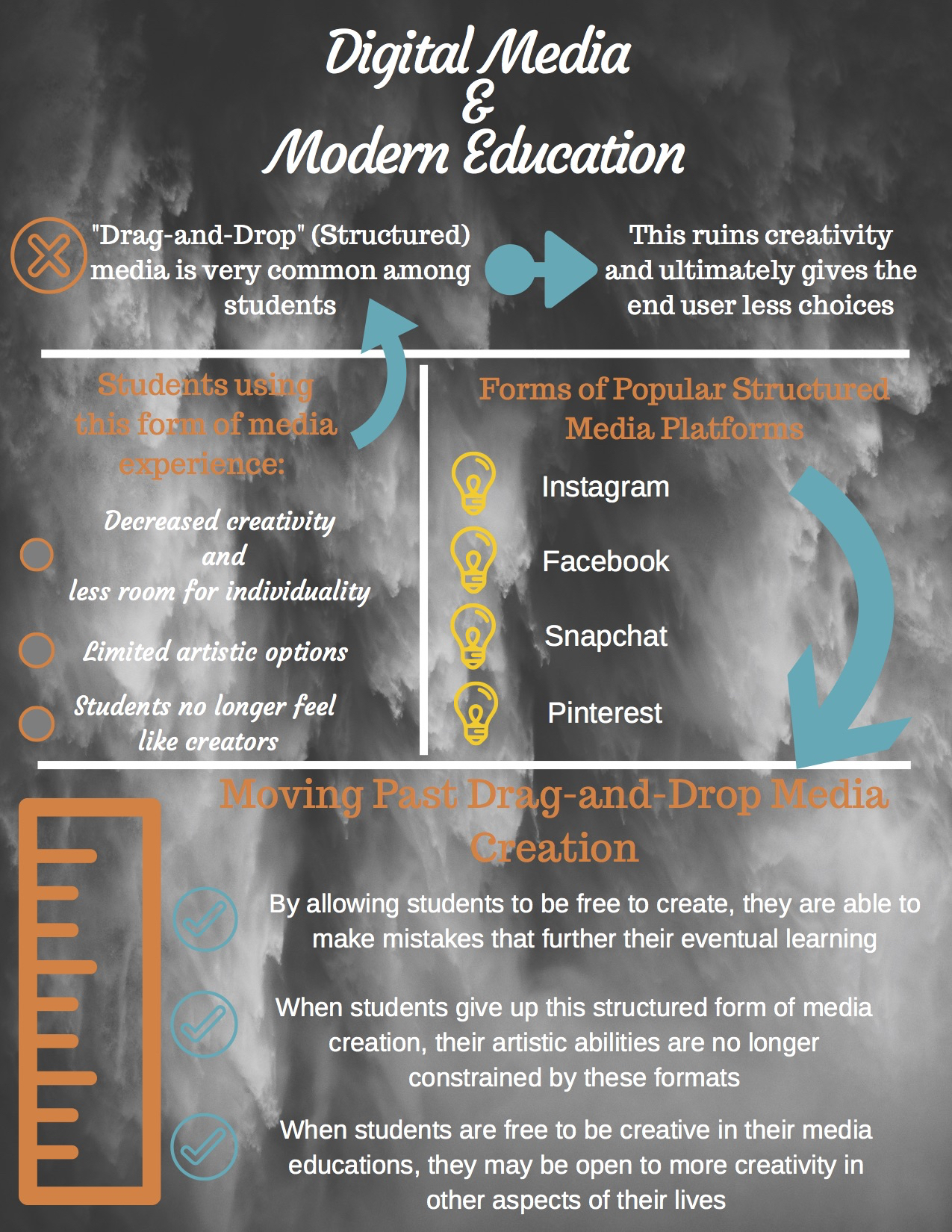In my second multimedia reflection, I have chosen to focus on the Tufekci article titled How Social Media Took us From Tahrir Square to Donald Trump. This article focused heavily on the way in which social media had experienced major transformations since its creation. More specifically, this article examined how social media had originally been used by the youth during uprisings to communicate and connect with one another, but had transformed in to a way for oppression to spread throughout the media sphere. This article often goes into the gritty details of some of these uprisings, and allows the reader to vividly picture themselves in the situations described by Tufecki. As a student who has grown up around a number of forms of social media (Instagram, Facebook, Twitter, etc.), this article resonated with me because I could very much imagine myself in situations where I was able to use the beneficial aspects of social media to keep in touch with others who are not directly connected to me in the physical world. That being said, I was also unfortunately able to connect with some of the less-idealistic aspects of social media that people can often encounter when using these platforms. More specifically, I recently encountered one of the more frustrating (and quite frankly disturbing) aspects of social media; targeted marketing. In this situation, a product that I had been discussing with a couple of my family members suddenly appeared in the advertisement bar on both my personal Facebook and Instagram accounts overnight. Not only was this a little unsettling (especially because I know I had not searched this product previously), but it made it clear that many of what we consider “offline” daily conversations are actually being monitored or studied by any number of our social media accounts. This was all the more concerning because of something I had recently witnessed while out on my practicum. One of the first things that I noticed when arriving to placement was how massively digitally connected high school students are in our society today. While it is only a rough estimate, I would say that well over 95% of students I encountered on practicum not only had a smartphone, but also used it multiple times throughout the course of each class. This constant monitoring goes against my own personal views as far as the way in which our constantly increasing levels of technological connection should be used. More specifically, I would say that I subscribe to a more classical sense of the use of technology, meaning that I am happy to use the latest and greatest forms of information technology, but would like to do so without being constantly tracked by “big data” companies. After reading this article and completing the Canva infographic, I would say that these personal beliefs have only been strengthened, as it becomes more and more clear that we are losing online privacy by the day. As far as new information provided by the article, I found it interesting just how many different organisations and individuals were using social media to help further their personal causes. While I know this may sound confusing when we consider how prevalent social media is in our daily lives, I personally have been guilty of only focusing on daily updates or news from within my own personal sphere of information and perspective. Considering the way in which digital media platforms and large organisations are currently able to target individuals with specific products they might find interesting, it is quite concerning how susceptible our younger students are to these practices.
That being said, I feel as though the actual creation of the Canva infographic went much more smoothly during my second multimedia reflection. Having been able to practice with this platform throughout my first multimedia reflection, I feel as though the end product I was able to produce was of much higher quality than the final product from my first reflection. While I was able to credit most of this increased output to more experience using the actual Canva site, I also felt that this article was much more interesting than the first, and thus left more of a lasting impression after my first read of the article. On the infographic, I have used the main ideas that I was able to take from the article and include them in large font to ensure the eye of the viewer was drawn to these critical aspects of the article. From there, I have broken down each of these main ideas with a smaller, more specific write-up regarding each topic. I have used different colours to move the eye throughout the infographic, as well as to draw attention to the main points within the article. Finally, as consumers and social media users, we must be conscious of the way in which the information we knowing (or often unknowingly) provide to large corporations is being used. In turn, this means we must be willing to demand quality policing of digital media platforms in both the political and economic realms. Overall, this article was eye opening as well as concerning, and I feel that it is relevant to almost everyone within in our digitally connected society.



